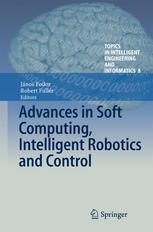

Most ebook files are in PDF format, so you can easily read them using various software such as Foxit Reader or directly on the Google Chrome browser.
Some ebook files are released by publishers in other formats such as .awz, .mobi, .epub, .fb2, etc. You may need to install specific software to read these formats on mobile/PC, such as Calibre.
Please read the tutorial at this link: https://ebookbell.com/faq
We offer FREE conversion to the popular formats you request; however, this may take some time. Therefore, right after payment, please email us, and we will try to provide the service as quickly as possible.
For some exceptional file formats or broken links (if any), please refrain from opening any disputes. Instead, email us first, and we will try to assist within a maximum of 6 hours.
EbookBell Team

5.0
50 reviewsSoft computing, intelligent robotics and control are in the core interest of contemporary engineering. Essential characteristics of soft computing methods are the ability to handle vague information, to apply human-like reasoning, their learning capability and ease of application. Soft computing techniques are widely applied in the control of dynamic systems, including mobile robots. The present volume is a collection of 20 chapters written by respectable experts of the fields, addressing various theoretical and practical aspects in soft computing, intelligent robotics and control.
The first part of the book concerns with issues of intelligent robotics, including robust xed point transformation design, experimental verification of the input-output feedback linearization of differentially driven mobile robot and applying kinematic synthesis to micro electro-mechanical systems design.
The second part of the book is devoted to fundamental aspects of soft computing. This includes practical aspects of fuzzy rule interpolation, subjective weights based meta learning in multi criteria decision making, swarm-based heuristics for an area exploration and knowledge driven adaptive product representations.
The last part addresses different problems, issues and methods of applied mathematics. This includes perturbation estimates for invariant subspaces of Hessenberg matrices, uncertainty and nonlinearity modelling by probabilistic metric spaces and comparison and visualization of the DNA of six primates.